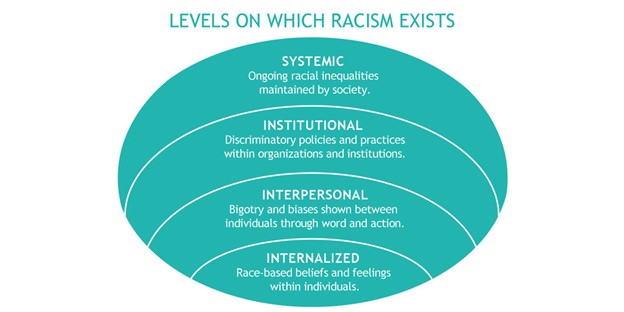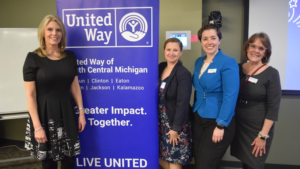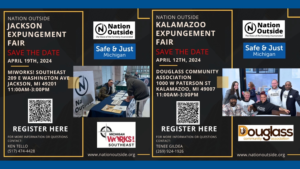
Day 11: Racism
There is no biological basis for race. It is a social construct, meaning that it is understood, defined (and redefined), and enforced by ideas people have about themselves and others based on the color of their skin. While it is a category people made up, race creates very real consequences. Race plays a big part in how people are treated, how communities build culture, and the ways in which power is concentrated.
Before the mid-1600s, there is no historical evidence that Whiteness or White people as a concept existed like the one we know today.
Bacon’s Rebellion was a turning point in the United States’ history of race. From the National Museum of African American History and Culture:
“Bacon’s Rebellion in 1676 was short-lived but had a long-reaching effect of deepening the racial divide in the colonial Chesapeake region. Coalitions of poor white people, free and enslaved Africans, rebelled against the rising planter class because they wanted to acquire land reserved for Virginia’s indigenous people. Elite colonists determined that they needed to amass more native lands for their continued expansion, to pacify poor European colonists who sought economic advancement, and to keep a dedicated labor force to do the grueling agricultural work. By the mid-1700s, new laws and societal norms linked Africans to perpetual labor, and the American colonies made formal social distinctions among its people based on appearance, place of origin, and heredity.”
Later, Greeks, Poles, Hungarians, Slavs, and other European groups had to prove themselves worthy of being considered White when they first immigrated in large numbers to the United States. They had to prove they were worthy by earning more money, and dressing and behaving in ways considered more respectable to show that they, too, were deserving of being considered White.
These are just two historical examples of the ways that race has been used to create distinct social and class levels. Racism is the system that supports a belief that White people are better than Black, Indigenous, and other People of Color. As we talked about earlier in this challenge, this doesn’t mean that White people are automatically wealthy or live easy lives, we know this is not true for many, many White people. Instead, a White person’s race doesn’t make it harder to access healthcare, jobs, housing, and other resources.

(source: https://www.egc.org/blog-2/2018/5/23/3u8bsicsasybnnco5bea7vculw6m9s)
Image description: title text reads, “levels on which racism exists.” Below the title is a teal oval divided into four parts and reads from top to bottom: Systemic: Ongoing racial inequalities maintained by society; Institutional: Discriminatory policies and practices within organizations and institutions; Interpersonal: Bigotry and biases shown between individuals through word and action; Internalized: Race-based beliefs and feelings within individuals.
It’s easy to believe that racism is something that only happens in certain places, within certain structures, or amongst certain individuals. However, race is deeply built into our society. Racism operates at four levels: systemic, institutional, interpersonal, and individual/internalized. Each of these levels interact with each other, but it’s important to note that while we may do everything we can to be nice to people of color, it doesn’t undo the stories or stereotypes that we were told about people of color. It doesn’t undo the discriminatory laws, policies, and practices within our businesses, religious institutions, or social organizations.
It takes conscious learning about anti-racism and unlearning the myths, stereotypes, and lies we’ve been told. It takes a willing and active community to address the policies, practices, and beliefs that create inequitable outcomes on the basis of race. It takes our community choosing a different path forward.
Today’s Challenge
Read:
28 Common racist attitudes and behaviors that indicate a detour or wrong turn into white guilt, denial, or defensiveness by Debra Leigh [10 min read] Racist attitudes and behaviors can show up in a lot of different ways. This article talks about common attitudes and behaviors, provides a reality check and why they might be harmful and inaccurate.
Non-Black People of Color Need to Start Having Conversations About the Anti-Blackness in Our Communities by Sharon Park. [4 min read] This guide shares helpful tips for non-Black people of color to start anti-racist conversations with friends and family.
Watch:
What happens when I try to talk race with White people [4 min watch] Author Renni Eddo-Lodge explains her experiences talking about race with White people.
Engage:
- Battle Creek- Truth, Racial Healing, and Transformation
- Jackson- Racial Equity Commission
- Kalamazoo- Truth, Racial Healing, and Transformation
- Lansing- Truth, Racial Healing, and Transformation
Discussion:
- “What’s the problem with being ‘not racist’? It is a claim that signifies neutrality: ‘I am not a racist, but neither am I aggressively against racism.’ But there is no neutrality in the racism struggle. One either allows racial inequities to persevere, as a racist, or confronts racial inequities, as an antiracist. There is no in-between safe space of ‘not racist.’” – Ibram X. Kendi
- How does this reframe of moving from not racist to anti-racist land for you? How can you shift from neutrality to be against racism at the individual or interpersonal levels?
- As Black, Indigenous, and other People of Color, how does meaningful care look like for you as you navigate microaggressions and the emotional fatigue from conversations about race and racism?
- As White people, how have you experienced and seen resistance or discomfort to conversations about race in yourself and others? What do you need in order to move more deeply into these spaces of reflection and deep listening?










